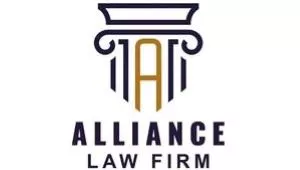*Dr. Ngozi Chinwa Ole with Izuchukwu Gideon Okpara and Lilian Adat1
1. Introduction
The oil and gas industry is not only capital intensive but very delicate and complex. Operations that pose a high risk are carried out in the onshore and offshore sectors. It is associated with innate risks, hazards, incidents and accidents which are capable of eroding safety and environmental protection. 2 Safety risks lurk across all levels of the industry including exploration, production projects (petroleum and gas installations), facility operations, maintenance, construction, processing, transport, storage, and during the application of the oil-derived products.3 Furthermore, the huge volumes of materials that are processed, handled and used make accidents highly likely in the industry. The public's apprehension is further heightened by the numerous experiences of oil spillages, pipeline explosions and environmental degradation in the Niger Delta Region of Nigeria where the reverberations of risk-related accidents are humongous. As such, concern is often expressed about the availability of the requisite expertise and technology in the industry, and the adequacy of the regulatory regime to manage the oil resources in a safe and environmentally friendly manner. In particular, the continuous accidents in the industry, and pollution of the environment by industry, question the effectiveness of the regulation and regulator in this context. Although several regulations exist globally that obligate operators to conduct their operations in a safe manner to prevent risk-related accidents, petroleum producing countries continue to experience them.4 Thus, the goal of the Safety Case Guideline is injury prevention and reduction in the oil and gas industry. Thus, it compels operators to have adequate safety systems in place, rather than prescribe the particular management systems they should adopt. The safety case was borne out of the conclusion that a prescriptive method of regulation cannot keep up with the risks associated with a fast-changing and high-risk environment.Thus, there was a strong imperative for a flexible system responsive to the fast-changing associated with the petroleum sector.5
There are up to 500 oil fields within the Niger Delta Region with more than 55% located offshore.6 Therefore, hazards or threats if not managed can cause fatalities or serious injury to personnel, and the public, damage to property assets, a negative impact on the environment and community and so on. Due to the volatile nature of the industry and the inherent risks associated with same, the Nigerian Upstream Petroleum Regulatory Commission (NUPRC) as part of its continuous efforts towards maintaining safety, formulated the Safety Case Guideline 2020 to statutorily obligate operators to have place adequate mitigation and control measures to reduce the occurrence of accidents and hazards as low as reasonably practicable (ALARP). The guidelines provide guidance to operators on issues to be addressed in respect of Safety Cases in different operations in the sector. In addition, it contains the definition; purpose and content of a safety case; submission and approval procedure; review and approval procedure; revision and sanctions. However, this paper shall review the NUPRC Safety Case Guidelines for Oil and Gas Facilities with a view to unearthing its content in the light of risk governance in the petroleum sector.
2. What is a Safety Case?
Under the Regulation, a Safety Case is defined as a structured argument supported by evidence that the Operators/Facility Owners present to the Regulators to show that their facility is acceptably safe for a specific application in a specific operating environment throughout its life cycle. A Safety Case must display the facility layout and process description; thoroughly explain technical safety studies that were conducted; and comprehensively identify all risks and hazards in the facility. In addition, it must describe the risk control technique; identify all critical aspects of the facility; describe safety management systems in place, effectiveness and efficiency, as well as show top management's commitment and responsibilities in ensuring safe operations. The Safety Case aims to ensure that there are documented systems in place to adequately prevent the occurrence of, and minimize the effect of major incidents, and high-potential near misses. It is formulated from safety-related studies and reports related to risk assessment, hazard identification, risk control and emergency response planning to hold the Operator accountable. It reviews the assumptions on which the risk minimisation strategy is based and ensures operators develop initiatives for further reduction of identified risks. The Guideline highlights the following types of Safety Cases at different stages of operation to include; Concept Safety Evaluation, Design Safety Case, Operational Safety Case and Decommissioning Safety Case.
3. Contents of a Safety Case
The NUPRC Regulation provides that a Safety Case should describe and demonstrate: introductory information; signed statements of fitness; a description of facilities and operations; formal safety assessments conducted; safety management systems; registers of hazards/ risks and their corresponding controls; remedial action plans etc. Furthermore, these are mandatory obligations which Oil and Gas Operator/Facility Owners must comply with to operate their facilities. The Safety Case Regulation details that the Safety Case should contain a Formal Safety Assessment conducted and a description of the safety management systems. This will be discussed in seriatim.
i. Formal Safety Assessment (FSA)
Oil and gas operators are expected to conduct a Formal Safety Assessment (FSA) of their facilities and installations. This FSA is expected to contain information on major accident hazards (MAHs) and show that all practicable controls have been identified to ensure that risk is reduced ALARP. The FSA process must include the identification of risks and appropriate measures adopted for each specific risk. The Regulation creates an FSA Team which consists of: NUPRC Representatives; Operations Personnel; Maintenance and Inspection Personnel; Instrumentation Personnel; HSE Personnel; Project Team and other subject matter experts as applicable. It makes it compulsory for the lead personnel and facilitator for any FSA to possess the requisite certification and be competent as required in the applicable Industry Codes and Standards for the conduct of such FSA. It also mandates that representatives of the NUPRC must participate in all assessment exercises and pre-read documents. This entails that all relevant documents of any FSA workshop shall be forwarded within four weeks before the commencement of such workshop to the NUPRC. Operators and facility owners identify safety critical elements (SCEs) associated with major accident hazards (MAHs).
ii. Safety Management Systems
Operators/facility owners are expected to describe and the demonstrate company's safety policy, integration of operating procedures, roles and responsibilities and demonstrate how all risks associated with the hazards of operating the facility are managed for continuous improvement throughout its life cycle. The Safety Management Systems (SMS) cover all issues of quality assurance and quality control procedures; and show that the number of personnel in the facility is adequate for the range of tasks that may be required to be performed on the facility both in normal operations and in emergencies. The SMS must demonstrate that it provides for safe operating procedures, inspection, maintenance and testing of equipment and hardware used to control all risks. They also describe operational and emergency communication systems between the facility, vessels, aircraft, and other installations within proximity, including commands in responding to emergencies; as well as clearly defined responsibilities for authorization and supervision of operations and documented work permit system. In addition, they establish systems for monitoring and evaluating operational effects on the working environment, health and control of drugs, substances and intoxicants in the facility. They stipulate incident reporting and management systems, including the processes continually used to identify and address facilities' deficiencies and incorporate lessons learnt.
The remedial action plan is expected to include a safety case, a comprehensive plan which describes the plan, parties responsible and timelines set to resolve, implement and improve all shortfalls identified at different stages in the life of the facility. Other relevant and supporting information may include key evidence within the Safety Case; details or results/ recommendations of safety studies conducted; important appendices; information which enhances or demonstrates safety; concluding any further assurance statements and so on.
4. Submission of Safety Case
Submission and approval of a Safety Case is a mandatory requirement for all installations to be operated, currently operating or to be decommissioned in the oil and gas industry in Nigeria. All installations must comply with regulations, guidelines, standards and other systems described in the Safety Case. This means that every facility in Nigeria must have a Safety Case, and imposes a responsibility on owners and/or operators of such facilities to develop, submit, and secure approval of the same for each relevant facility. Each Safety Case is to be submitted at specific stipulated periods and under specific conditions, and any deviation from the conditions will invalidate the Safety Case approval. For instance, the Concept Safety Evaluation report is submitted at the end of a concept selection evaluation exercise and alongside the submission of a Field Development Plan. The Design Safety Case is submitted separately at the end of Front-End Engineering Design (FEED) and before Detailed Engineering Design (DED). The Operation Safety Case is to be submitted between the end of DED and during the fabrication/construction phase. During the operation phase, the Safety Case must be revalidated and submitted every five years. The Decommissioning Safety Case must be submitted by the operator/ facility owner before the decommissioning activity commences.
5. Review of a Safety Case
When a Safety Case has been submitted, there may be a need for a joint review/ workshop which will enable the Operator/Facility Owner to present, demonstrate and justify the adequacy of the safety provisions in the facility to the NUPRC or on any other grey areas as may be necessary. This joint review aims to assure the NUPRC that the Safety Case dossier satisfies all the required expectations. The joint review team will be made up of NUPRC representatives, operations personnel, relevant discipline engineers, HSE personnel, the Project Development team and thirdparty consultant companies where applicable.
At the end of a review process, safety case validation and verification will also be carried out. This involves a physical visit to the facility to confirm that installations, and operations on the facility, amongst others, are fit for purpose and consistent with Safety Management Systems, Formal Safety Assessments and Safety Cases. It is on this basis that the Safety Case will be approved or the Facility Owner may be directed by the NUPRC to take further steps before approval can be obtained. The Safety Case must be kept up to date and revised as necessary during the facility life cycle and must reflect the operational reality of the installation. A revised Safety Case is required to be resubmitted for approval every five years and non-compliance with this requirement may lead to summary penalties or fines to facility owners/operators or the revocation of associated leases, licenses and permits by the NUPRC.
6. Oil and Gas Incidents Post 2020
Despite the already existing guidelines put in place to reduce accidents, the oil and gas industry continues to suffer from hazardous incidents and accidents. An example is the explosion of a production and storage vessel owned by the Shebah Exploration & Production Company Limited (SEPCOL) with a capacity of two million barrels of storage. The vessel exploded off the coast of the Niger Delta on the 15th of August 2023 following a blast from the previous day, thereby, spilling 50,000 barrels of oil into the sea.7 However, the production licence was revoked by the NUPRC. In addition, the NUPRC is currently investigating an explosion which led to a major fire incident near a pipeline in Emohua, Rivers State in April 2023.8 Furthermore, on the 15th of August 2023, Seplat Energy PLC announced the capsizing of their swamp drilling rig "Majestic" which was in transit to its planned drilling site in Delta State. Unfortunately, there was a fatality and three crew members remained missing. These are a few of the numerous incidents that occur daily and are unreported. These occurrences have been ascribed to different factors including but not limited to bad weather, mechanical failure, structural damage and human error with the highest ranking. In addition, lack of adequate safety management processes, non-implementation of safety management principles, techniques and guidelines, poor safety culture of workers and lack of knowledge and training on safety practices are all accountable for the numerous accidents that have continued to bedevil the industry.
7. Conclusion
The Safety Case is a comprehensive guide towards safety management in the oil and gas industry. It ensures that formal safety assessments are conducted in all facilities, vessels, aircraft, and other installations. It also requires that safety management systems are put in place to ensure that accidents, hazards and risks are eliminated or reduced to the barest minimum. All relevant facilities in Nigeria are expected to have emergency response and remedial action plans. At every stage of operations in a facility, the Safety Case must have been submitted, reviewed, validated and verified through physical inspection and must be approved by the NUPRC. It does not matter whether the facility has been planned for decommissioning, it is also expected to have a valid and subsisting Safety Case. The Regulations also provide for penalties for non-compliance with the requirements for a Safety Case, including summary penalties and fines. These Safety Case Guidelines, if strictly complied with, will help curtail incidents that may lead to accidents and fatalities or cause harm to the environment and society at large. However, it is obvious that since the Safety Guideline was introduced, there has been a series of accidents in the upstream sector which have not only claimed human lives but have also caused physical injury to persons as well as severe harm to the environment. This is a clear testament that companies in the upstream sector are yet to comply with the Safety Case Guideline. The NUPRC should adopt a proactive measure by ensuring that companies treat the issue of safety with the highest priority. Also, the NUPRC should prioritise physical inspection facilities and installation by the provision of the Guidelines. This will serve as first-hand evidence of verification and confirmation that vessels, installations and all oil and gas facilities are safety compliant before any operation is performed. The NUPRC should not only react to defaults by imposing penalties such as license withdrawal after the deed has already been done, bearing in mind that any incident is likely to cause harm to society at large.
Footnotes
1. Dr. Ngozi Chinwa Ole is a Consultant (Managing Associate) and, Izuchukwu Gideon Okpara is a Managing Associate at Alliance Law Firm while Lilian Adat is an Executive Associate at the same firm.
2. Efeeloo Nangih, 'Safety Practices and Performance of Oil and Gas Servicing Companies in Nigeria: Empirical Evidences from Selected Companies in Port Harcourt' (2017) (7) (4) International Journal of Academic Research in Accounting, Finance and Management Sciences; 1.
3. Osei-Wusu Achaw and Eric Danso Boateng, 'Safety Practices in the Oil and Gas Industries in Ghana' (2012) (1) (2) International Journal of Development and Sustainability; 457.
4. The US Outer Continental Shelf Lands Act 1953 (as amended 2000), s 3 (6).
5. Ibid.
6. Ngozi Chinwa Ole and Eti Best Herbert, "The Nigerian Offshore Oil Risk Governance Regime: Does the Petroleum Industry Act 2021 Address the Existing Gaps?" (2022) (31) (3) Studia Luridica Lublinensia; 144.
7. Tife Owolabi, "Nigeria Oil Production and Storage Vessel Explodes" [https://www.reuters.com/business/energy/nigerian-oil-production-vessel-explodes-2022-02-03/] assessed 15 August 2023.
8. Nse Anthony-Uko, "NUPRC Investigates Pipeline Explosion in Rivers Community" [https://www.leadership.ng/nuprc-investigates-pipeline-explosion-fire-in-rivers-community/] assessed 15 August 2023.
The content of this article is intended to provide a general guide to the subject matter. Specialist advice should be sought about your specific circumstances.


